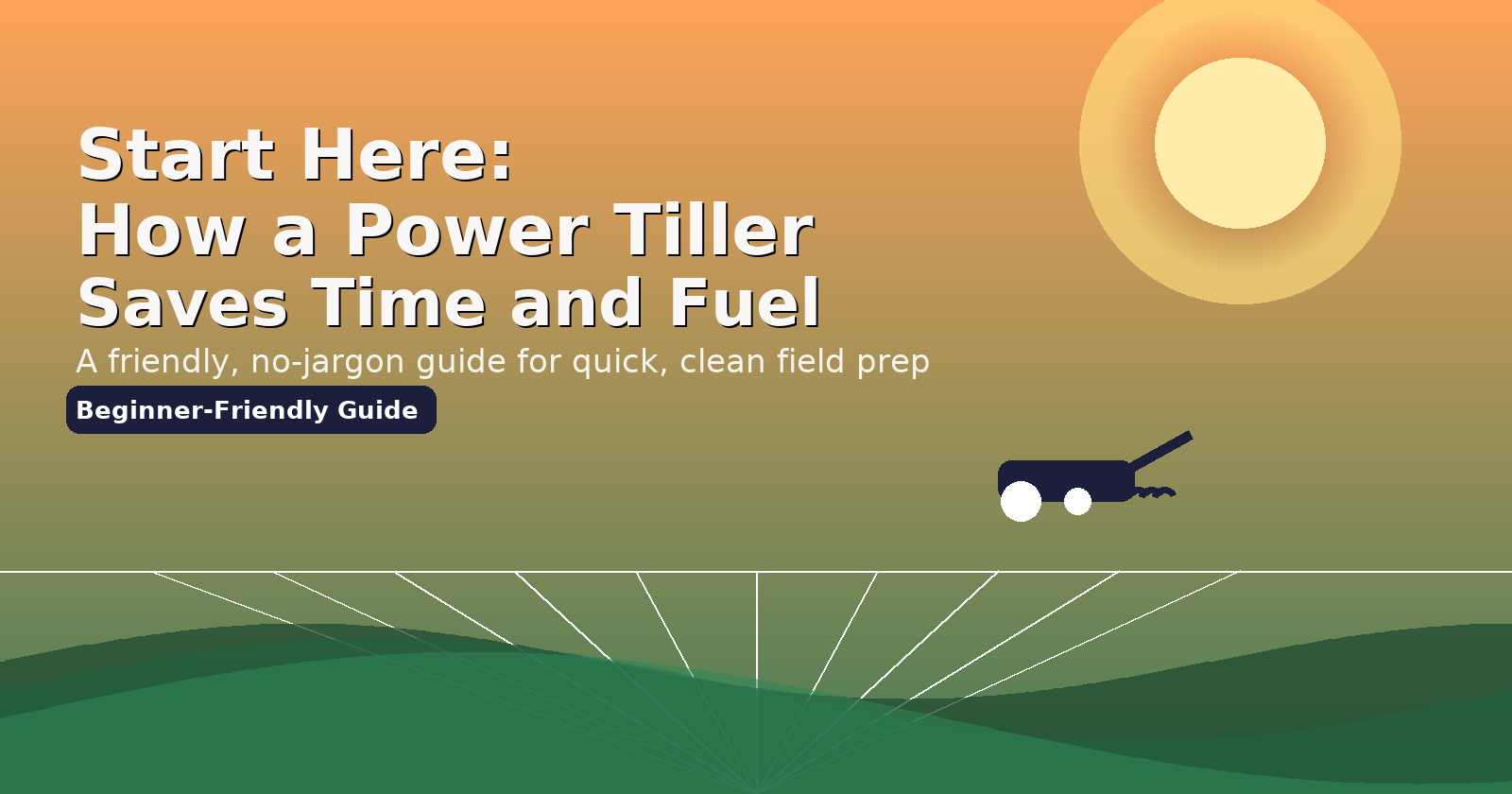
I’ll be honest: most of us don’t wake up excited to till soil. We just want a seedbed that looks right, drains well, and doesn’t chew through a day’s fuel. That’s where a power tiller earns its keep—less strain on you, more work from the machine.
What a power tiller actually does ?
A power tiller loosens and mixes soil so roots can breathe and water doesn’t just sit on top. Add a couple of attachments and it can ridge, weed between rows, and even haul a light trailer around the farm.
Where it shines:
- Turning hard, post-rain soil into a soft, plant-ready bed
- Weeding between rows without breaking your back
- Making neat furrows for potatoes, onions, or drip lines
- Quick farm chores—moving tools, sacks, and crates
Small story: Last season, a neighbor kept postponing bed prep because the ground felt heavy. One afternoon with a tiller, two calm passes, and the plot was ready before sunset. No drama, no wasted fuel.
The time & fuel equation
- Fewer passes: Sharp tines and steady forward motion bite deeper, faster.
- Right-size coverage: Narrow enough for tight spaces, wide enough to finish on time.
- Less wheel slip: You’re guiding, not wrestling—good for fuel and your shoulders.
- Consistent depth: Even tilth means fewer do-overs and better germination.
First-time setup (five minutes, big difference)
- Blade choice: Standard tines suit most soils; hardened tines if you’ve got stones.
- Depth control: Start shallow. If the soil crumbles nicely, go a bit deeper on the second pass.
- Handle height: Adjust so your elbows are relaxed—if your shoulders are doing the lifting, raise the handle.
- Tyres vs cage wheels: Tyres for everyday work; cage wheels for soft or sticky ground.
- Fuel & filter: Fresh fuel, clean air filter, snug bolts. These three save fuel more than you’d think.
Through the season (how it helps at every stage)
- Before sowing: Loosen, level, and mix in compost or residue.
- After sprouting: Use a narrow blade set to weed between rows without hurting roots.
- Fertilizer day: Quick shallow pass, apply, and water—nutrients reach the root zone faster.
- Pre-harvest tidy: Clear leftover growth to keep pests down and the plot ready for the next crop.
Attachments that earn their space
- Ridger: Straight, consistent furrows in minutes.
- Inter-cultivator blades: Slide neatly between rows.
- Light trailer kit: Fewer trips with sacks and tools.
- Side discs/guards: Protect stems when you’re working close.
Five mistakes new users make (and how to avoid them)
- Going too deep, too soon: First pass shallow. Let the machine and time do the work.
- Full throttle everywhere: A steady pace gives a better finish and sips fuel.
- Wrong tyre pressure: Too soft drags, too hard bounces. Aim for a firm roll.
- Dull tines: If it feels like you’re pushing, sharpen or replace.
- Tilling wet soil: If it sticks in your hand, wait. If it crumbles, go.
A 10-minute routine after each use
Brush off soil, check bolts, glance at the air filter, wipe around the fuel cap, and park it under cover. Tomorrow-you will be grateful.
Ready to save a few hours this week?
Start with a basic blade set, adjust depth calmly, and let the tiller set the pace. Your back—and your fuel can—will notice the difference.
Next step: Explore Power Tillers from Bonhoeffer Machines.






